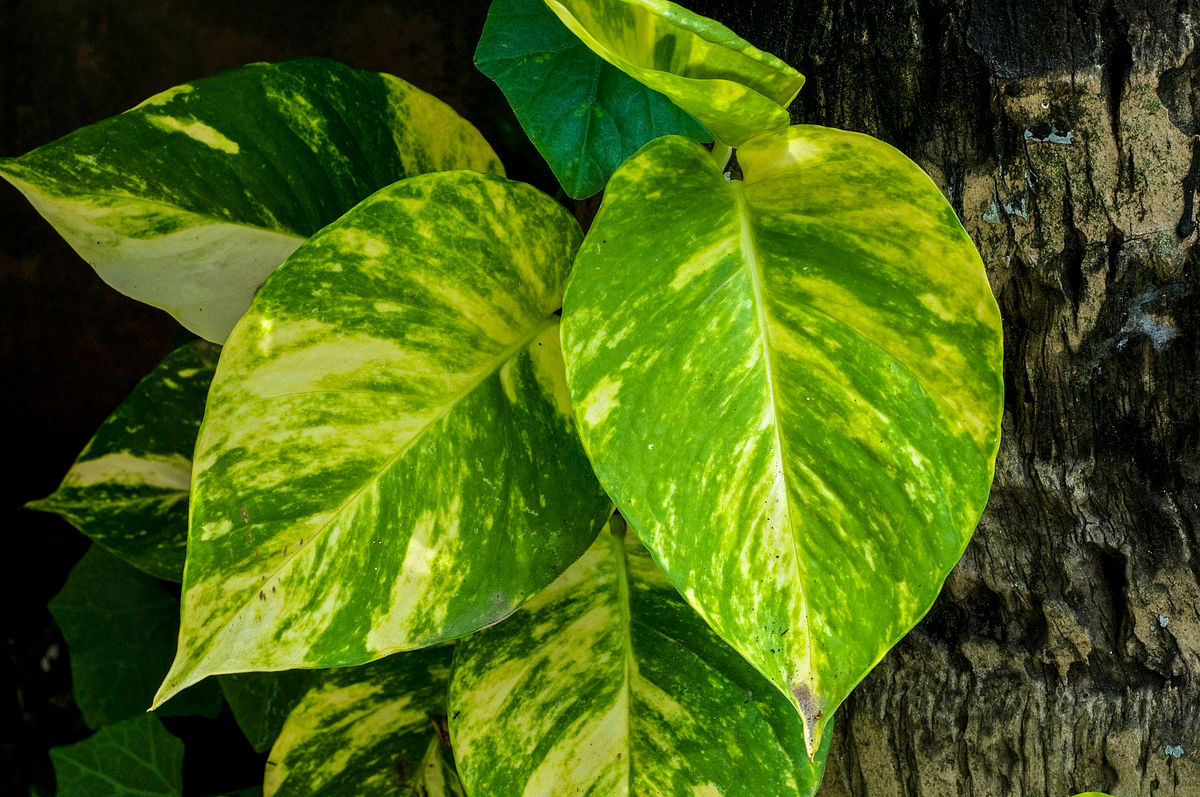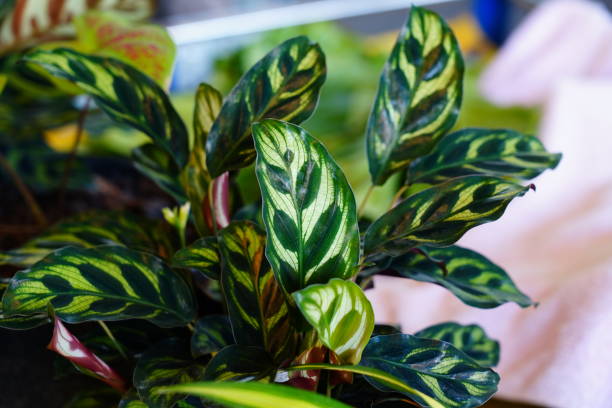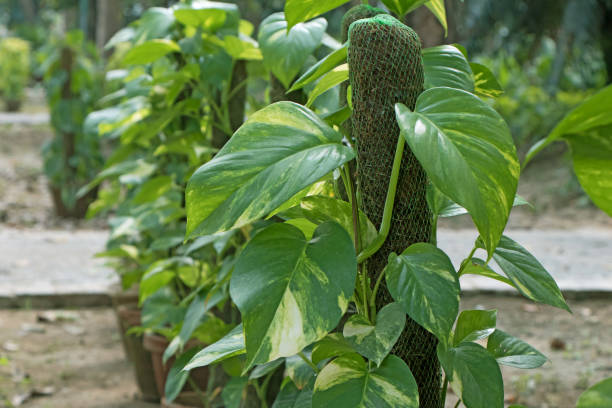How To Do Devil’s Ivy Care: A Complete Guide

The pothos plant or known as Devil’s Ivy, is a classic and wonderful houseplant to grow. Good thing is that the devil’s ivy care is also easy, and this lets you have this awesome houseplant with minimum care.
The pothos plant is one of the most popular houseplants as it is eye-catching and easy to care for. This is an alluring plant that has leaves in heart shape, and these leaves are variegated in yellow and green. These plants are fast growers, tolerant to wide climatic and growing situations, and hardy. This low need for pothos care makes it an amazing option as a houseplant. They can also reach up to 10′, thus a great option for hanging gardens.
However, it does need a little care, and in the article, we will tell you how to care for pothos. We will also explore the various varieties of the devil’s ivy plant.
Devil’s Ivy Care
The devil’s ivy plant care is easy and straightforward; you just need to know some basics. It can tolerate a variety of climatic conditions and is an invasive species of the plant.
Some basic of how to care for pothos are:
Water
This plant’s root system is comparatively shallow, which makes it easy for the water to penetrate the roots. Thus all you need to do is water it often when needed during the months of summer and spring.
Soil
These two months need comparatively little more water as these are the growing months for this plant. You need to remember in the pothos care that dont soak the roots of this plant, and it will be fine.
The regular potting soil for the houseplants is also perfect for growing the devil’s ivy. All you need to know is that the soil has proper drainage as it is essential for best results.
However, even when offering good drainage, the soil should be able to hold enough water. This is essential as the pothos plant needs a little moist soil for it – it doesn’t like dry soil. Thus it is essential that you provide it with the proper drainage but a little moisture-holding soil.
Fertilizer For Pothos Plant
The devil’s ivy care is also easy as the plant requires minimum fertilizers for its growth. It can survive months before needing the fertilizers again. However, if you want its foliage and it to grow vigorously, then provide it with a mix of fertilizers. The best fertilizers you could provide include slow-release granules or the water-soluble variants or compost tea.
You need to remember that avoid providing it with fertilizers during the winters and the growing months.
You should also lookout for the growth of the plant. If you see that the growth of the plant has been stopped, then reduce the frequency of fertilization. For best results, you need to fertilize it every 2 to 3 months. If you provide fertilizers at these intervals along with other things like light and water, then your pothos plant care will be an easy-breezy affair.
Repotting
The potting of the pothos is also ways like the other aspects of the devil’s ivy car. You don’t need much large or extensive care, and you can just put it in a normal or small pot.
However, if you want it to grow extensively, then you should select a pot that is a little large in size. You also need to be a little careful when potting; although it is a hardy plant, a little care is never a bad idea.
Sunlight
One of the reasons why the pothos plant is such a craze in comparison to other house plants is its hardiness. It can tolerate a wide variety of the climate including various sunlight conditions.
This plant can thrive in various sunlight varying from low light to bright light conditions. However, the best-suited sunlight conditions are indirect and bright light. It thrives best in such light conditions. Although all of the pothos plant varieties can adjust to the low light conditions, the intensity of the variegated contrast and color of leaves may vary. In low light conditions, the leaf color may be light in comparison to bright light conditions.
You also need to be careful about keeping them in the bright and direct sunlight as it may damage the plant. One of the common problems that may seem is the burning of the devil’s ivy’s tender leaves. Thus the perfect placement area for it is the filtered light near the window, or a shady location in the patio can be great.
Pruning of The Pothos Plant
Pruning is a needed thing to control the growth and shape of your plant. This is essential as sometimes the pothos send foliage out, which look out of the place. Thus in golden pothos care and other varieties, pruning is essential.
The good thing about the golden pothos’ care when it comes to pruning is that it’s a fast grower. So it matters little how much pruning you do; it will always grow back in no time.
Propagation Of Pothos Plant
The devil’s ivy care is easy, and so is the propagation of this plant. All you need to do for the propagation is. Cut some vines and then root the pathos in water. Once you do this in some time, new leaves will appear under the nodes, and they will be directly under the leaf.
You can also propagate by the method of air layering. But most gardeners use a water propagation method as it is easy, and the new roots appear very quickly. Thus, the water propagation method is best if you want the quick and best results.
An even more amazing thing about the pothos plant is that you don’t need to worry about the plants trimming. This is because the plant’s vines begin a new shoot at the area where you do propagation/cut.
Problems of Pothos Plant
This plant has not many problems as we already told it is hard to kill houseplant. Although you must lookout for something like:
- Bacterial and fungal infection. This problem can be simply avoided by making sure that the soil you provide is not too soaked or moist.
- Some common pests which might harm this plant are mealy bugs and spider mites. You can avoid this problem by simplifying using cotton. Dip a cotton piece in alcohol or insecticide soap and remove the bugs.
These are some Devil’s ivy care tips that will help you in maintaining and growing this plant.
Pothos Plant Varieties
These are some of the pothos plant varieties which you can grow at your home:
Neon Pothos
This is one of the most popular varieties of the devil’s eye plant. It has the bright neon color green leaves. This makes it a perfect option if you want something to brighten up your house’s dark corner. The pothos plants are also a good option for hanging baskets.
Golden Pothos
This is the most popular variety of pothos when you want an indoor plant. The reason for its popularity is that it needs little care and the heart-shaped leaves give it an eye-catching look.
Its leaves also have yellow variegation, which contrasts with the glossy green leaves. This contrast gives the plant an appealing outlook. The reason for its popularity is that the golden pothos care is one of the lowest in comparison to others.
Marble Queen Pothos
This plant has variegated leaves which have cram white and green colors. These combinations of various colors give it an attractive, alluring look. This houseplant is also known for its leathery leaves.
Jade Pothos
The leaves of this variety of the pothos plant are solid green in color and have a trailing nature. This makes it similar to other varieties of pothos.
The similarities between this and the heartleaf philodendron often confuse the people between the two plants.
These are some of the most popular varieties of the devil’s ivy. Other than that, there are also some other varieties of this plant which you can try.
Other Varieties are:
- Glacier pothos
- Silver pothos
- Pear pothos
These are some of the devil’s ivy care tips that you can follow to have a healthy and attractive indoor houseplant. The good thing about the pothos plants is that they are easy to care and you can easily maintain them with minimum care.
Bottom Line
Devil’s ivy or Pothos plant is one of the most popular houseplants; this is because the devil’s ivy care is easy, and it requires minimum maintenance.
There are also various varieties of the devil’s ivy out of which you can choose the best for you. However, all the varieties have their own qualities and are equally eye-catching.






